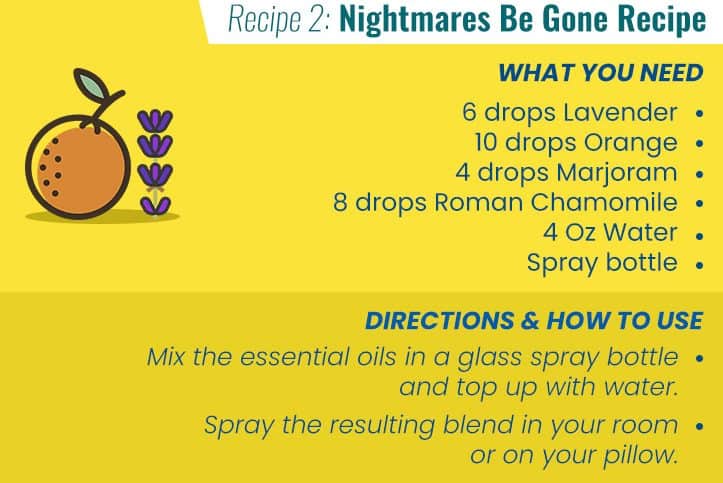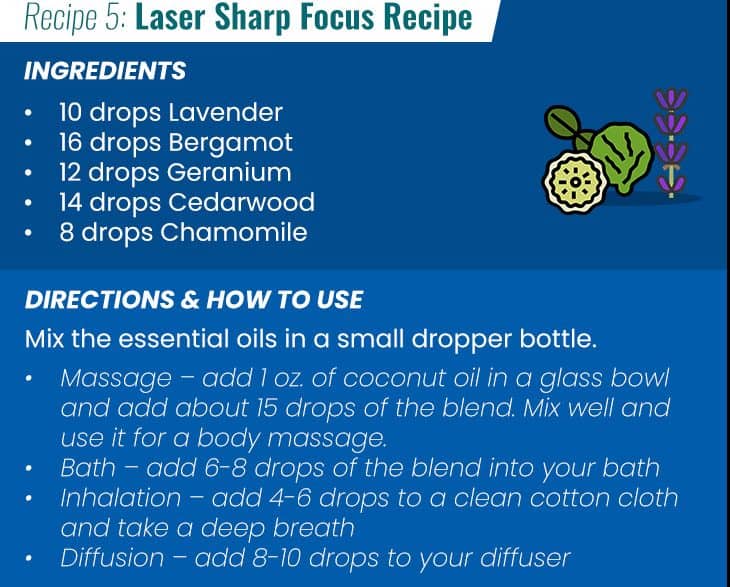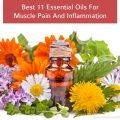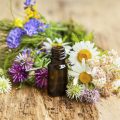Today’s segment is focused on all things PTSD along with some natural alternative disorder coping methods, including using essential oils to help deal with the condition.
Veterans Day is an official United States public holiday which occurs on November 11 every year, honouring military veterans.
War veterans; we salute and applaud you wherever you are. Your service to man and country is nothing short of heroic!
Serving your country in this capacity is no doubt the most selfless act – and for good reasons I might add. I mean, we can’t even begin to fathom what these brave men and women give up.
Imagine, being far away from home for months on end, in the trenches, battling the front lines, taking lives, not to mention seeing unspeakable things.
Sure, movies and YouTube videos do a great job of capturing the return of a long awaited marine to his young family – the reactions of their kids is just priceless. If you feel like you need a reason to shed a tear, these videos will have you weeping like a baby.
But while we may view these brave men and women of war as tough and hard, the effects of their selfless acts often follow them home. Memories of a battle hard-won, plenty of friends maimed, crippled, killed in action… The things they see – it’s more than enough to leave them broken and scarred for life (this is the dark side of war that we try to ignore, but war is war, not a heated debate).
Unfortunately, very few have the courage to speak out and seek help, they are still hardened marines at heart after all. This is partly because some think they’ll lose the respect they are accorded when they lay themselves bare, or maybe even called weak by their peers.
However, the sad truth is that thousands of people all over the world share the same story. A story of Post Traumatic Stress Disorder (PTSD).
The effect of this disorder has the potential to cripple even the strongest of wills, even years after the troubling event. Now, while PTSD is almost synonymous with war, any traumatic experience can lead to this disorder as I’ll explain later on.
And though most folks (you included) have definitely heard of it, very few actually know how to deal with it. That’s why I’m so glad you took the initiative to come over, you’re in the right place.
Let’s hop right to it then, shall we?
What Is PTSD?
You don’t have to look far, the internet is brimming with stories of people experiencing PTSD.
Most of these individuals record that the condition affects their social life negatively. Because of this disorder, it is often assumed they served in the military. But when they set the record straight, people turn against them and think they are faking it or just making up an excuse for their violent behaviour. (You know who I’m talking about, that bum you always pass by on your way to work with an army jacket claiming to be a war vet.)
But here is the thing about PTSD: it does not affect war veterans alone (though they are the most common victims). Actually, history records (back in World War 2) show that before its name change, it was referred to as to Combat Stress Reaction or Battle Fatigue.
The Diagnosis of PTSD in 1980 filled a gaping hole in psychiatric diagnosis. This diagnosis introduced the concept of ‘trauma’ which stomped the narrative that persons developing the disorder had an inherent weakness and that only war veterans suffered from it.
So in short, PTSD is basically a mental health problem that some individuals develop after they witness or experience a life-threatening event including natural disasters, combat, sexual assault or car accidents.
After such troubling events, it is only natural that one would be on edge all the time, have memories that ‘shake the ground beneath them’, or experience sleepless nights with vivid nightmares.
It may be difficult to continue with normal activities like driving to work, going to school or spending time with loved ones. However, after some time, most persons start feeling better and get their groove back.
In the event the above symptoms last for more than a few weeks, then you probably have PTSD (more on the symptoms and diagnosis later on). For some, the symptoms appear way later after the event has passed or disappear only to reappear after a while.
How Does PTSD Happen?
When you are in danger (experiencing a traumatic event), the body reacts by engaging the ‘fight or flight’ mode. In this mode, the body releases several stress hormones including norepinephrine and adrenaline.
These hormones are released to give the body bursts of energy to deal with the situation. Your heart will beat faster (you will probably even hear the thumping in your chest) and your brain will pause the ‘recording’ of short-term memories.
When experiencing PTSD, your brain gets stuck in the ‘danger mode’ even after the dangerous situation has passed. It continues releasing stress hormones into the bloodstream which triggers stress-related responses – eventually, PTSD symptoms manifest.
Through a study done in 2013, experts reveal that people suffering from PTSD have an overly active amygdala – part of the brain tasked with the responsibility of controlling emotion and fear.
With time PTSD patients undergo significant changes in their brain. The hippocampus, the portion that controls memory becomes smaller. This is one of the reasons why health experts recommend you get treatment early.
Types Of Stress-Related Conditions (including PTSD)
PTSD always starts with a normal reaction to life-threatening events. In many cases, anxiety and stress disorders are confused for PTSD. While they are not, they are still related to PTSD given that they are all attempts of the body to cope with the traumatic incident. Here are the five main types of PTSD.
1. Normal Stress Response
This occurs when adults who have experienced a significantly traumatic event during their adulthood experience emotional numbing, intense and bad memories, being cut off from friends, body tension and having feelings of unreality.
Usually, such individuals will recover after a few weeks. In such cases, a group debrief of the experience helps in recovery. In the debriefing session, the event is described then the emotional response is explored.
After breaking down the emotions a discussion of the symptoms that followed the trauma is conducted and finally, the survivor is educated on the responses and is armed with some coping mechanisms.
2. Acute Stress Disorder
Note that there is a difference between acute stress disorder and PTSD. Like normal stress response, it occurs when an individual goes through a traumatic experience including unemployment, loss of a loved one, natural disaster or rape.
While there is a difference between it and PTSD, if it is not treated, the acute stress disorder will develop into PTSD. Similar to PTSD, acute stress disorder can be treated through therapy, medication, group support and other intensive treatment methods.
3. Uncomplicated PTSD
This condition is usually as a result of a single major life-threatening event (not multiple traumatic events). Uncomplicated PTSD is usually the easiest type of PTSD to treat.
Its symptoms include flashbacks or nightmares, a strong innate desire to avoid any reminders of the said trauma, mood changes, and irritability, feeling unsafe and lacking hope and faith in a better future.
4. Complex PTSD
This is also known as complicated PTSD. It usually develops following numerous traumatic events. This type of PTSD is prevalent in situations that involve abuse such as domestic violence as well as war and sudden loss.
Complex PTSD has all the signs of uncomplicated PTSD. However, its treatment usually takes much longer.
5. Comorbid PTSD
Comorbid PTSD also falls under the umbrella of the co-occurring disorders. This form of PTSD is used on individuals who have several mental health concerns and / or substance abuse disorder.
Comorbid PTSD is common since most individuals suffer from multiple conditions at once.
Symptoms Of PTSD
As I’ve mentioned in the above sections, PTSD symptoms may either start immediately or may be delayed. For some, the symptoms could even appear months or even years after the traumatic event has passed.
Needless to say, these symptoms cause major strain on an individual’s relationships. What’s more, they can severely disrupt normal daily activities.
Note: the symptoms can vary with time and from one person to the next.
Experts group PTSD symptoms into four categories:
1. Intrusive memories
The symptoms include:
- Re-living the life-threatening event as though it is actually happening (you can call them flashbacks)
- Recurrent, unwanted memories of the traumatic event
- Nightmares of the event
- Physical reactions to things that remind you of the event or undergoing severe emotional stress
2. Negative Changes in Mood and Thinking
Some of the symptoms may include:
- Lacking hope in the future
- Negative thoughts of those around you and yourself
- Memory lapses – these are usually limited to crucial aspects of the life-threatening events. You have probably seen people with such symptoms in movies undergoing hypnosis therapy to unlock parts of their memory
- Trouble maintaining close and meaningful relationships
- Feelings of detachment from friends and family
- Trouble experiencing positive and warm emotions
- Losing interest in activities you once enjoyed
- Being emotionally numb – cold
3. Avoidance
Here the symptoms include:
- Avoiding activities, people and places that remind you of the event that broke you
- Trying to avoid talking or even thinking about the event
4. Changes in emotional and physical reactions
Under this category the symptoms include:
- Being easy to frighten or rattle
- Always on high alert of impending doom
- Having trouble sleeping
- Having trouble concentrating
- Experiencing angry outbursts, having aggressive behaviour and being irritable
- Overwhelming shame or guilt
For kids younger than six years their signs and symptoms may also include:
- Fighting dreams that at times include scenes from the life-threatening event
- Re-enacting aspects of the event during their play sessions. This may even include drawing
How Can I Tell I Have PTSD?
Honestly, most of us have gone through some traumatic event – one that had a real effect on us (If you haven’t, you are one of the lucky few or you’re probably in denial). But is the shock and fear that follow afterwards enough for us to be diagnosed with PTSD?
From what we have covered so far, you can answer that, can’t you? But just in case it’s not clear, every traumatic event is followed by a normal response. This response fades away after a while.
In the event you cannot seem to shake insomnia and anxiety, you probably have PTSD. Here is how PTSD is diagnosed.
Diagnosing PTSD
When you walk into your doctor’s office, he will engage you about the event leading to the trauma and keep an eye on your reactions to see if they match the criteria listed for diagnosing PTSD.
Below is an overview of the criteria used.
Criterion A (one must be met)
You must have been threatened by death or exposed to it. Or, you must have had a serious injury or have been threatened or actually been sexually assaulted. To qualify you should have experienced one of the scenarios below:
- Witnessed the event
- Had the first-hand experience
- Learned that a relative or a close friend experienced a life-threatening event
- You are regularly in contact with persons going through trauma (probably it within your line of work)
Criterion B (one must be met)
You experience the traumatic event in one of the below ways:
- Nightmares
- Flashbacks
- Thoughts you seem not to have control over
- Physical symptoms when you think about the particular traumatic event
- Emotional distress
Criterion C (one must be met)
You actively seek to avoid situations and things that will remind you of the life-threatening event. To ‘pass’ this criterion, one of the following must be true:
- You avoid feelings and thoughts that are related to the said trauma. For instance, you might refuse to speak anything remotely related to war, in the event war is the cause of your PTSD symptoms
- Avoid things which remind you of the life-threatening situation. You do not watch war movie for fear that they will trigger painful feelings or fear
Criterion D (two must be met)
You suddenly started having negative thoughts or feelings, or your regular negative thoughts got much worse after the traumatic event. To meet this criterion, two of the below statements should be true for you:
- You have little recollection of the event
- You are excessively negative about the world and yourself
- You blame yourself and others for the trauma you went through, even when no one is to blame
- You feel isolated and lonely
- You lost interest in activities you enjoyed in the past
- You have a hard time being positive and experiencing joy
Criterion E (two must be met)
Your symptoms got worse after you went through the traumatic event. Two of the below statements need to be true for you to meet this criterion:
- You are often angry and irritable
- You are always on guard and are easily startled
- You engage in dangerous and risky behaviour
- You experience trouble sleeping
- You have trouble remaining focused
Criterion F (must be met)
To fall under this criterion, any of the experienced symptoms should have stuck for more than 30 days.
Criterion G (must be met)
Your symptoms interfere with your daily chores and work.
Criterion H (must be met)
Your symptoms are not related to illegal drugs, other illnesses or medicines.
Note: the above criteria are all based on the PTSD symptoms.
Do People With PTSD Ever Get Better?
Before anything else, I should point out that ‘getting better’ means different things to different people. There are several treatment methods for PTSD.
For most, the treatment may get rid of the symptoms entirely while for others, it may mean reducing just a few symptoms.
But what is true for all people with PTSD (regardless of the treatment method they choose) is that PTSD does not have to interfere with their daily activities.
PTSD Treatments
While there are numerous official treatment options for PTSD, I’ll limit our discussion to only two – medication and psychotherapy (also known as talk therapy and counselling). Some experts combine these two treatments for better results.
Psychotherapy
This treatment option involves meeting with a therapist on a regular basis. Under this treatment option, there are several types of treatments as well. These include:
- Trauma-focused psychotherapy – which focuses its efforts on the traumatic incident and the meaning. It is by far the most effective treatment option. It is further broken down into:
- Cognitive Processing Therapy – where you are equipped with skills that aid in understanding the trauma and how it affected your feelings and thoughts.
- Prolonged Exposure – in which you are encouraged to talk more about the trauma over and over until the memories no longer agitate and upset you. This technique helps you to get a firm grasp of your feelings and thoughts about the traumatic incident.
- Eye Movement Desensitization and Reprocessing – this treatment process focuses on hand movements and sounds as you talk about the incident.
Medications for PTSD
Medication also proves to be an effective tool against PTSD. Some specific medication including fluoxetine, sertraline, venlafaxine and paroxetine help in combating PTSD.
Note: you should stay away from atypical antipsychotics and benzodiazepines since they do not truly treat core symptoms of PTSD and are usually addictive.
Best 5 Essential Oils For PTSD
Now, let’s sink our teeth deep into the natural way of dealing with PTSD. You’d be surprised just how many symptoms can be cured by the use of essential oils and aromatherapy.
Below are some of the best and most effective essential oils designed to help cope with PTSD by reducing the intensity of the symptoms. From painful memories to night terrors, there’s an oil for everything.
1. Lavender
This is by far the most popular essential oil available. It is used to treat a host of conditions including sleeplessness, depression and anxiety. It has a natural calming effect that restores balance to the nervous system.
Additionally, it helps with irritability, panic, and nervousness. Many people who have used this oil for PTSD and anxiety have nothing but great results to report.
2. Rose
Coming in second is Rose. Rose essential oil has the same properties as lavender and generally works in a similar manner.
It has a pleasant aroma which works to calm the body and achieves harmony and inner peace for a troubled mind. Due to its analgesic and anti-depressant properties, it is the perfect solution for individuals battling with PTSD and anger issues.
3. Ylang Ylang
This oil has lots of benefits, especially to individuals who are dealing with emotional highs and lows, insomnia and nightmares (these are the worst). It not only helps in creating peace and tranquillity, it also improves one’s mood and instils cheerfulness.
Researchers have found that ylang ylang stimulates a relaxation effect within the body and can therefore help with stress and depression. For individuals who experience scare flashbacks and nightmares, this oil will be of great help. Your flashback or nightmares will no longer drop you on the floor.
4. Roman Chamomile
With a scent that will remind you of apples, Roman Chamomile is a nice addition to your list of fragrances that calm your nerves.
Like rose and lavender, chamomile will also afford you inner peace and drain stress from your body.
5. Orange
In a study conducted in 2017, experts have come to the conclusion that Orange essential oil can alleviate / lessen PTSD symptoms, including stress and fear.
A study based on lab mice and rats showed that the use of orange oil helps to reduce the production of cells in the immune system that induce stress-related responses.
6 Essential Oil Blends For PTSD
Recipe 1: Calming the Storm Blend
Ingredients
- 3 drops Sweet Orange
- 2 drops Bergamot
- 1 drop Roman Chamomile
- Roll-on Bottle
- 10 ml Sweet Almond oil
Why use this blend
When you are in the ‘fight or flight’ mode, your emotions are heightened. At that time, you’re like a vampire – who as we see in thriller movies has heightened senses. Apparently their love and hate emotions greatly surpass those of humans too!
Needless to say, the anger experienced by people with PTSD feels like a raging storm inside. Most people have ended up hurting their loved ones and themselves.
While not everyone with PTSD experiences chronic anger issues, it is a symptom you need to be on the lookout for. Lucky for you, the above blend will help calm your nerves and put your anger issues on a leash for your safety and that of your loved ones as well.
Every essential oil ingredient used in this blend plays an important role in helping to calm your senses and overall, reduce your stress level. Think of the ingredients as an out from the fight or flight mode your body is stuck in. This blend will give a great aroma.
How to use
Blend all oils in a dark glass bottle. Apply to pulse points such as the wrist or take in 3 deep breaths of the aroma and you will feel the anger subside.
Recipe 2: Nightmares Be Gone Recipe
What you need
- 6 drops Lavender
- 10 drops Orange
- 4 drops Marjoram
- 8 drops Roman Chamomile
- 4 Oz Water
- Spray bottle
Why use this recipe
Nightmares affect children the most, no doubt about it. However, adults who have gone through traumatic experiences can be just as haunted by these night terrors.
The human brain is a powerful tool that can piece together your worst memories and recreate your fears. The fact that the recreation happens when one is in the REM (Rapid Eye Movement) stage makes one feel as though he/she is trapped in a horror movie they can’t escape.
It’s even worse because you can smell, taste, hear and see everything that happens as though it were real. So if your nightmares (courtesy of PTSD) are causing you to not want to sleep, the above blend will help soothe your nervous system and treat your nightmares.
The lavender used is great in managing insomnia and calming your nerves. Marjoram, on the other hand, is best for alleviating panic attacks and also enhancing your mood. Overall, it will afford you a peaceful night sleep. In addition to ridding you of nightmares, Roman Chamomile will keep you from sleepwalking.
How to use
Mix the essential oils in a glass spray bottle and top up with water. Spray the resulting blend in your room or on your pillow.
Recipe 3: Refreshing Memory Blend
What you need
- 6 drops Bergamot
- 4 drops Ginger
- 4 drops Basil
- 3 drops Rosemary
- 2 Oz. Water
- Spray bottle
Why use this blend
As I’ve mentioned several times in this piece, when you experience a traumatic event, the body’s natural way of protecting itself is forgetting key scenes of the traumatic experience. While this may help keep you from feeling the full wrath of the traumatic event, it also prevents you from fully recovering from the incident.
What most psychiatrist do when dealing with PTSD patients is help them unlock their memories and help them cope with the situation. Though the process is difficult, mentally and emotionally, it helps to have a friend by your side and this blend to help you remember.
This is probably the best and most effective way to recover bits and pieces of your lost memory. The essential oil blend sprayed into the air will release an aroma that is refreshing and will clear your mind.
How to use
Add the ingredients into the spray bottle and fill it with water. Shake well and then spray into your rooms.
Recipe 4: Fearless Blend
Ingredients
- 2 drops Frankincense
- 3 drops Clary Sage
- 4 drops Bergamot
- 15 ml Grapeseed oil
Why use this blend
Fear is a lingering and silent feeling. It prevents you from moving forward. We all experience fear from time to time but for those with PTSD, it is on a whole other level. It is part and parcel of the fight or flight response that PTSD patients are stuck in.
A while back I came across an Instagram post saying, ‘fear is a feeling that tricks us into living boring lives’. And come to think of it, there is some truth in it. Imagine how, because of your fear, you cannot enjoy a good thriller or horror movie, or cannot go skydiving, take a long bath, swim, race or attend a paintball challenge.
But I cannot sit back and watch as fear cripples your life. So I cooked up this here blend to help drain your fear and have you enjoy life to the fullest. What’s more, it is easy to mix.
How to use
Just mix the ingredients with a carrier oil and apply it at the nape of your neck, or add the blend into a home diffuser (without adding the grapeseed carrier oil) and let the aroma fill your room.
Recipe 5: Laser Sharp Focus Recipe
Ingredients
- 10 drops Lavender
- 16 drops Bergamot
- 12 drops Geranium
- 14 drops Cedarwood
- 8 drops Chamomile
Why use this recipe
It is hard enough to concentrate with distractions in every corner. I can only begin to imagine how hard it is for PTSD patients who also have to deal with email and text notifications, and a growing list of tasks to complete every hour.
While most people turn to caffeine to boost their concentration, it is usually at the cost of low energy levels at some point in the day. However, this blend is perfect as it improves your focus, concentration and awareness without you having to deal with side effects later on.
How to use
Easy…mix the essential oils in a small dropper bottle of about 30 ml. You can choose to use the resulting blend in a bath, through a massage, inhalation or diffusion. However, bear in mind that the amount you use will differ.
- Massage – add 1 oz. of coconut oil in a glass bowl and add about 15 drops of the blend. Mix well and use it for a body massage.
- Bath – add 6-8 drops of the blend into your bath
- Inhalation – add 4-6 drops to a clean cotton cloth and take a deep breath
- Diffusion – add 8-10 drops to your diffuser
Recipe 6: Joyous Blend
Ingredients
- 3 drops Lavender
- 4 drops Neroli
- 2 drops Roman Chamomile
Why use this blend
Truth be told, no one likes a spoilsport who can’t take a joke – they’re no fun at all. Unfortunately, with PTSD, irritability is part of the package. With this symptom, you run the risk of having people avoid you and even putting a strain on relationships that matter to you most.
Instead of being mistaken for a douche (most people will not understand it is PTSD’s fault), whip up this blend to lengthen your fuse and lifts your mood. You can use it in your diffuser.
How to use
Simply add the above essential oils into a dark colored glass bottle and mix well. Add to your diffuser and let it work its magic. Note that thick oils are not compatible with some diffuser brands and types.
Recommended Product for PTSD
Want to be in control and remove those feelings of anger, anxiety, depression, fear, insecurity, loneliness, etc. Start by stimulating your brain with those sweet scents with pure essential oils blends from L’orpur!
This isn’t magic; it’s Mother Nature very own gift. So, go ahead, drive away those negative emotions from your life, seize control of your mind and get positive with this 5 Blends Kit! Click here to read more.
The Bottom Line
That wraps up yet another highly educative segment on a condition that has remained a mystery for decades. PTSD is indeed a challenge, but let it not take charge of your life. Grab it by the horns and show it who’s boss.
With that said, I know the above blends and essential oils will work for you. Just make sure you listen to your doctor first and use essential oils to complement your treatment. And when you do try them out, feel free to share your experience and help someone else overcome the disorder too. Coz on or off the battle field, us soldiers have to stick together am I right. (what? I’m a soldier… a health and essential oil soldier perhaps)
















